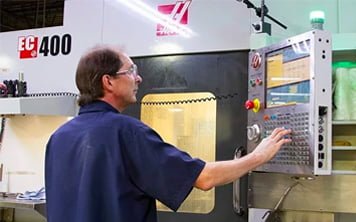By Eric Brisbon
The good news is that today’s quality systems fundamentally tell you what you must do and, in some cases, recommendations on how to do it. Follow the process requirements (there is that word again), life will be good, and a neat certification statement will hang in your lobby.
Now, some of that sounds old school and frankly it is. Innovation on its own tends to be a somewhat large departure from the norm while continuous improvements relates to taking what you are doing and make it a little better…continuously. This discussion would be somewhat flat without mentioning Kaizen.
Some 30 years ago, Masaaki Imai introduced Kaizen, which focused on the thought that small incremental improvements in a process will result in significant improvements over time. Eliminate waste, enhance your processes, learn from your mistakes and great things will happen. While that is certainly a paraphrase, American companies jumped on this bandwagon with the success Toyota was having in the US car market (tempered slightly by the brake recall). Early in this century, every manufacturing job posting wanted people experienced in Toyota Manufacturing Principles. An entire industry grew to meet the demand. Industrial areas all have their Lean Councils and plant tours abound.
Furthermore, new plants were built that claimed “no waste.” Everything that could be recycled was; wastewater was processed, fluids like coolants and oils reclaimed, packaging materials reused or transformed for alternatives. Nothing goes to a landfill! Green is in. Keep in mind that we are trying to find methods to transform innovative thoughts into controllable processes that don’t deviate and are measurable, as well as green and socially acceptable, and thus, new terms have emerged.
Sustainable Manufacturing focuses on total life-cycle considerations of products that minimize resource use (energy, materials, etc.) to ease the demands on our planet, are economically sound and socially acceptable. Therefore, the processes have expanded greatly from how to put a screw into a hole at the proper torque, to the entirety of the processes around your company, both internal and external.
In the spirit of Sustainable Manufacturing, remanufacturing is one aspect which has grown significantly over the last 20 years and continues to climb. OEM’s have mature processes for their products which can be directly applied to the reclaim or remanufacture of older product. Scrapping old, used up product may be very unwise when a whole new life cycle can commence with an innovative remanufactured alternative. This adds a whole new avenue to industrialization of a remanufacturing product by an OEM, as processes and disciplines practiced over decades may need to be altered slightly to meet new demands of remanufacture.
We touched on a few methods for innovation in the workplace. AMBAC International is a fuel injection company that is over 100 years old. It has transformed its many decades of OEM teaching and history into a remanufacture culture. Innovation and process controls become even more challenging with remanufactured product as your raw material (a used returned core) is variable. All cores are not created equal as the usage, life, handling and overall component condition varies. Big remanufactures have developed new processes just to handle the core. In light of keeping a unified, measurable process performance, many new challenges arise when decisions are made that not only affect core selection but the overall recovery and manufacturing process. Each aspect is part of the industrialization process and must be completed to ensure a quality, profitable product.
So how does one develop variable process controls? All of the aforementioned methods still apply; however, AMBAC has also introduced open book management (The Great Game of Business). Giving the associates full, unedited feedback on all production processes and how they relate to the bottom-line company performance, has been instrumental in allowing innovation, while reducing deviations to known processes. Mistakes are recognizable in dollars and cents and the right questions are asked and answered at all levels. Certainly, this has become another important element in their overall industrialization process.

